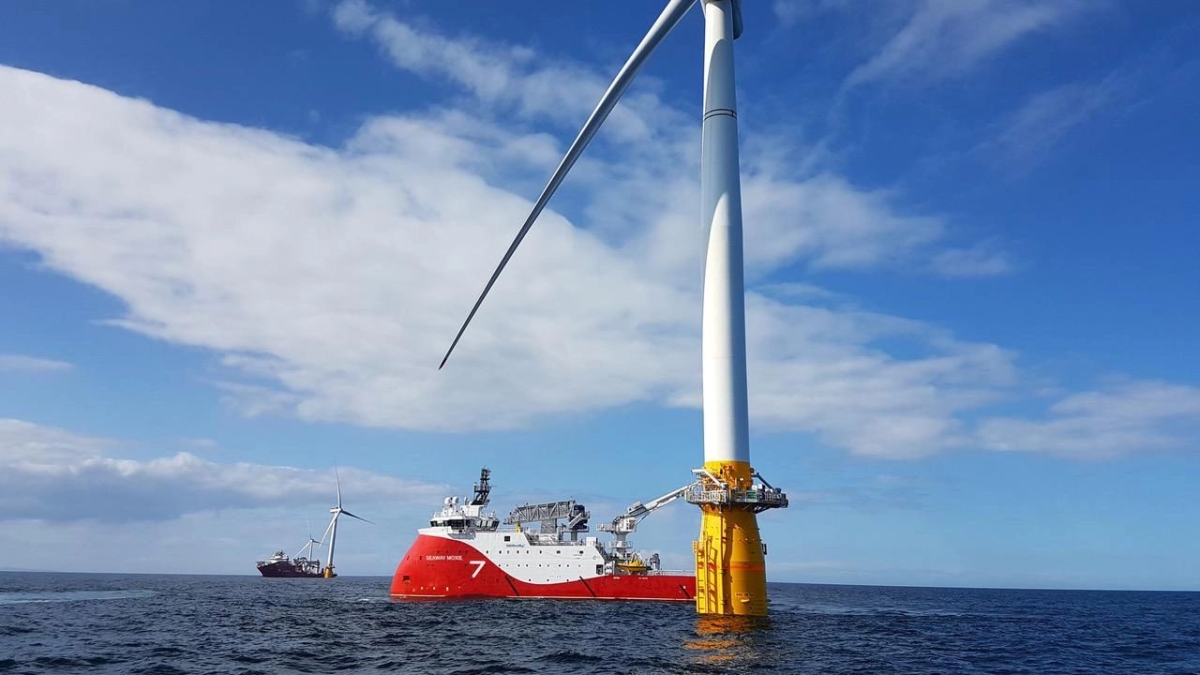
Equinor and Polenergia signed agreements for the design, production, delivery and installation of inter-array cables and export cables for the jointly built Bałtyk II and Bałtyk III offshore wind farms with a total capacity of 1.44 GW.
Inter-array cables will be delivered and installed by Seaway7. In turn, the contract for offshore export cables was awarded to an international consortium created by Jan de Nul and Hellenic Cables. Recently, the partners also signed an agreement with DNV, which will take care of the certification of the offshore parts of the Bałtyk II and Bałtyk III wind farms.
– Signing
subsequent contracts brings us closer to making the final investment
decision and then delivering the first energy from the Bałtyk II and
Bałtyk III offshore wind farms in 2027. These will be one of the
first wind farms in the Polish sea, the launch of which will
strengthen energy security and provide affordable, stable renewable
energy for over 2 million households – says Michał Jerzy
Kolodziejczyk, President of Equinor in Poland.
After
contracting all construction elements, obtaining the necessary
permits and making the final investment decision, the implementation
phase of the Bałtyk II and Bałtyk III projects with a total
capacity of 1.44 GW will begin.
Offshore work,
including installation of internal cables and marine export cables,
will begin in 2026. Internal cables with a total length of 200
kilometers and a voltage of 66 kV will connect 100 turbines located
in the Baltic Sea and two marine power stations. In turn, four export
cables with a total length of 256 kilometers will carry 220 kV
electricity from marine power stations to land stations.
The internal
cables will be laid on the seabed and buried, and the exit of the
marine export cables to land will be carried out using the trenchless
method, i.e. under the surface of the earth, without interfering with
the coastal zone, including the beach.
– The use of
this technology allows for the connection of sea and land power
infrastructure while maintaining the environmental and landscape
values of the Polish coast. This is very important not only for us,
but also for local communities. We provide residents of seaside towns
with information about the progress in the development of our
projects on an ongoing basis. We talk to them at our regular
meetings, but also at the recently launched Baltic Offshore Wind
Farms Information Center. The point we opened in Łeba is the first
facility of this type in Poland – says Marta Porzuczek, Director of
the Environmental Protection and Sustainable Development Department
at the Polenergia Group.
Selected
suppliers of internal and export cables have global experience in
supporting developers in the construction of offshore wind farms.
Seaway7, a supplier of internal cables for the Baltic II and Baltic
III investments, offers specialized services in the field of offshore
infrastructure installation, as well as provides heavy transport
services for the renewable energy sector.
The consortium
formed by the Belgian company Jan de Nul, known for providing
services related to the construction and maintenance of maritime
infrastructure, in partnership with the Greek cable manufacturer,
Hellenic Cables, will be responsible for the supply and installation
of marine export cables for both Bałtyk offshore wind farms.
Equinor and
Polenergia are jointly developing three offshore wind farms with a
total capacity of up to 3 GW. In addition to the Bałtyk II and
Bałtyk III projects, the partners are also developing 1.56 GW of
power as part of the Bałtyk I project, which is the most advanced
investment of the second phase of offshore wind in Poland. The
project is being prepared for auction in 2025.


